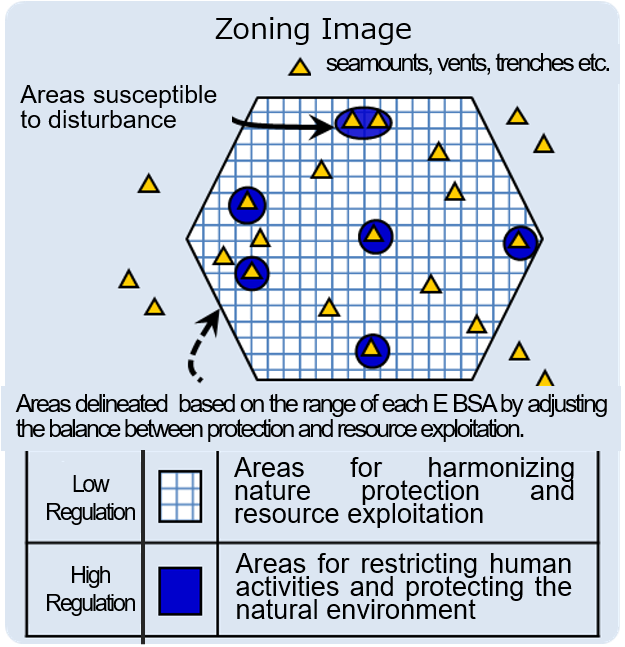Nature & Parks
Marine protected areas for conservation of offshore seabeds
- Since the establishment of the 2nd Ocean Basic Plan (April, 2013), the Ministry of the Environment (MOE) has newly designated and expanded national parks and natural environment conservation areas in the coastal area, however the area has slightly increased in our jurisdictional water area.
- Since FY 2016, the MOE has conducted research to designate new MPAs in the offshore zone. (studied themes: current status of biodiversity on offshore area, case studies on offshore MPAs in other countries and high seas, institutional studies, etc.)
- Since FY 2017, an expert group of designated MPAs on the offshore area has been set up, and the outcome of this discussion, as summarized below, was utilized for preparation of an actual system in MPAs. The detailed outcome is shown on https://www.env.go.jp/nature/naturebiodic/kaiyo-hogoku.html in Japanese.
- In April 2019, the amendment bill of Nature Conservation Law passed by the Diet, and we are preparing for its enforcement.
Basic principles of MPAs to conserve offshore areas
- Various ecosystems formed according to each topography type on ocean floors are significant in terms of biodiversity conservation.
- Scientific information on offshore area ecosystems is still insufficient.
- Yet, especially disturbances on ocean floors which are devastating from the perspective of biodiversity may irreversibly disturb ecosystems, so consideration of designation of MPAs based on currently available information is important.
- MPAs should be designated by considering ecosystem approach, such as securing appropriate spatial coverage, appropriate balance between protection and use/exploitation, and adaptive review on the designation.
MPA designation and management policy for offshore area conservation
 To designate MPAs, it is necessary to include all types of ecosystems in either of protected areas, which target seamounts, hydrothermal vents, submarine trenches etc., based on Japanese EBSAs.
To designate MPAs, it is necessary to include all types of ecosystems in either of protected areas, which target seamounts, hydrothermal vents, submarine trenches etc., based on Japanese EBSAs.- It is appropriate to specifically designate in 2-stages based on regulation intensities and to carry out proper management in each area.
- It is necessary to target the mining and towing of fishing gears that disturb ocean floors.
- For future resource utilization in designated MPAs, it may be possible to review MPA zoning based on accumulation of scientific information while securing total area and regulation intensities (quality) of MPAs.